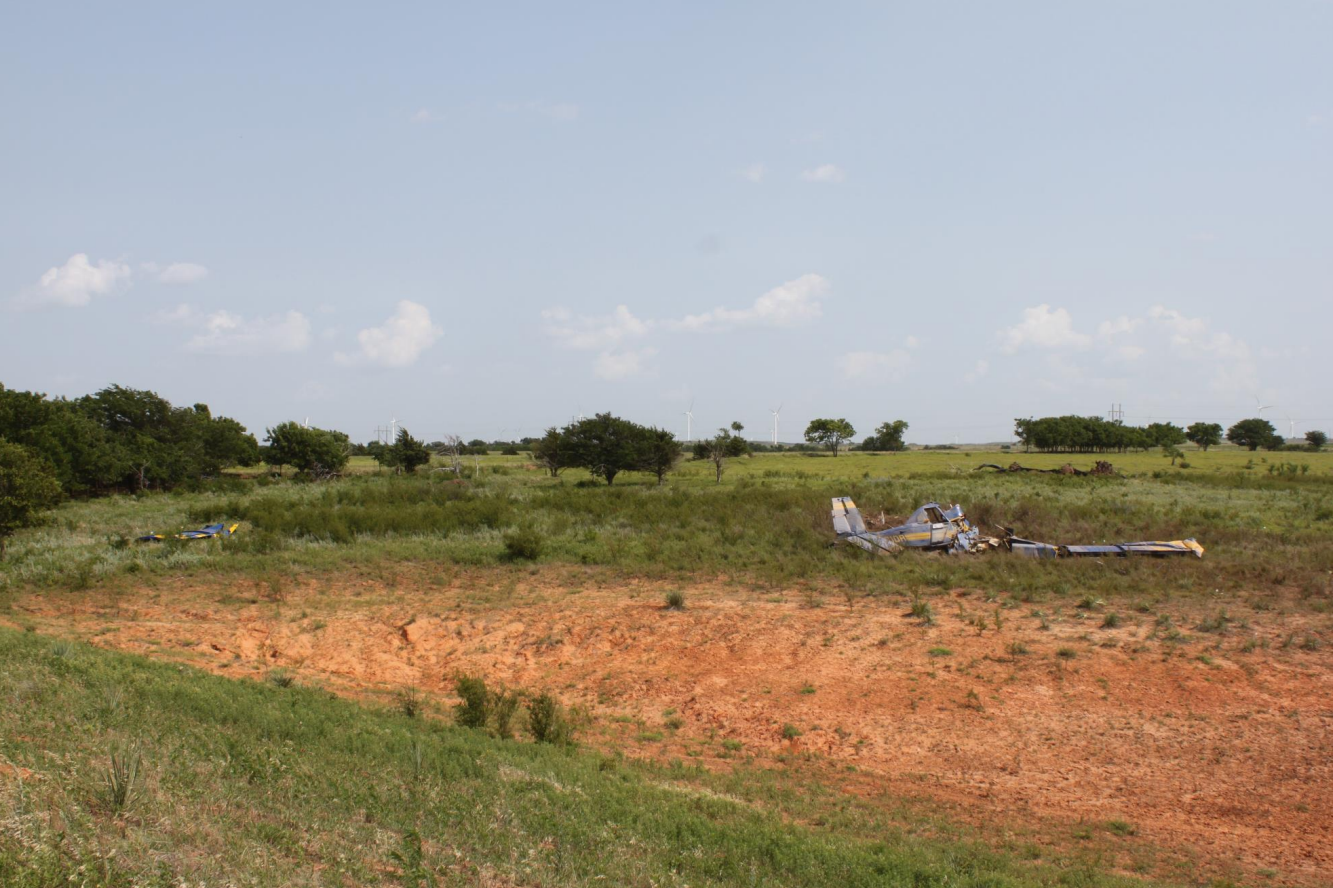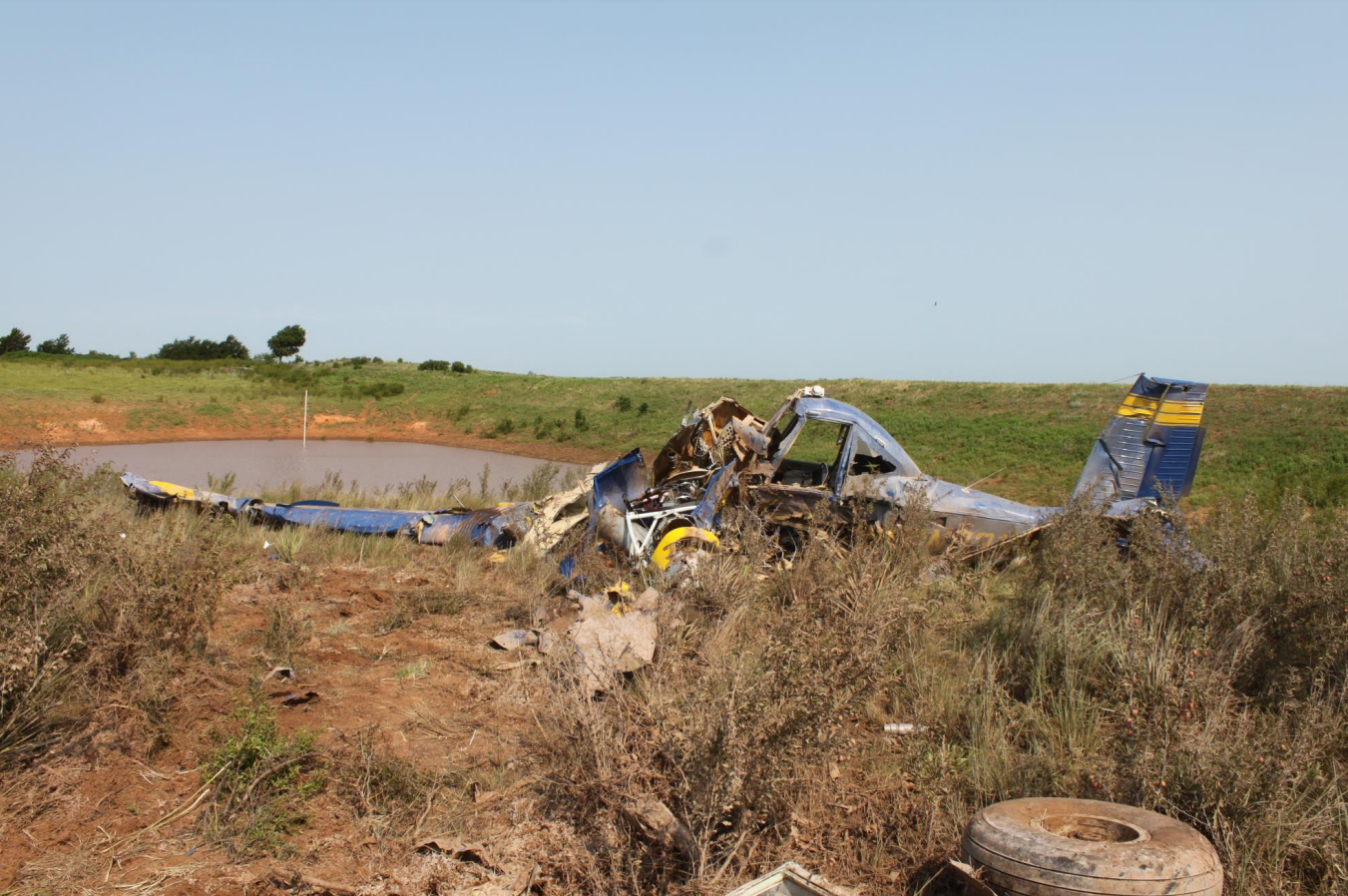
ASN Wikibase Occurrence # 265380
This information is added by users of ASN. Neither ASN nor the Flight Safety Foundation are responsible for the completeness or correctness of this information.
If you feel this information is incomplete or incorrect, you can submit corrected information.
| Date: | Monday 12 July 2021 |
| Time: | 08:05 |
| Type: | WSK PZL-Mielec M-18A Turbine Dromader |
| Owner/operator: | Regier Aerial LLC |
| Registration: | N9310R |
| MSN: | 1Z018-01 |
| Year of manufacture: | 1988 |
| Total airframe hrs: | 5508 hours |
| Engine model: | Honeywell TPE331-11U |
| Fatalities: | Fatalities: 1 / Occupants: 1 |
| Aircraft damage: | Destroyed |
| Category: | Accident |
| Location: | Seiling, OK -
 United States of America United States of America
|
| Phase: | Manoeuvring (airshow, firefighting, ag.ops.) |
| Nature: | Agricultural |
| Departure airport: | Fairview Municipal Airport, OK (6K4) |
| Fairview Municipal Airport, OK (6K4) | |
| Investigating agency: | NTSB |
| Confidence Rating: |
On July 12, 2021, at 0805 central daylight time, a PZL Mielec M-18A “Dromader” airplane, N9310R, was destroyed when it was involved in an accident near Seiling, Oklahoma. The pilot was fatally injured. The airplane was operated as a Title 14 Code of Federal Regulations Part 137 aerial application flight.
The pilot was conducting an agricultural application flight at the time of the accident. As the pilot concluded an application pass and entered a turn to return for another pass, the left outboard wing section separated from the center wing section. The airplane was destroyed when it impacted a pasture.
Examination revealed that the main spar wing attachment fitting on the outboard wing section failed. Specifically, the lower lug corresponding to the lower main spar attachment failed due to fatigue. Metallurgical examination determined that the fatigue crack initiated at a corrosion pit on the surface of the wing fitting lug bore. The fatigue crack had propagated about 0.80 inch before the remaining lug cross-section was unable to support the required load and failed in overstress.
The fitting lug bore surface exhibited corrosion pitting, and corrosion deposits were prevalent on the mating surfaces of the expansion mandrel assembly, which was in contact with the wing fitting bore. No indication of previous magnetic particle inspection of the lug was observed. In addition, only degraded deposits of corrosion-inhibiting compound were observed on the associated attachment hardware. There was no indication that the failed wing fitting had been replaced or the lug bore diameter machined at any point during the airplane service life.
As a result of previous accidents involving wing fitting failures, the airframe manufacturer issued a service bulletin (SB) requiring recurring inspection of the wing fittings. Shortly afterward, the Federal Aviation Administration (FAA) issued an airworthiness directive (AD) requiring compliance with the SB inspection requirements for all US-registered airplanes. The AD/SB required removal of the expansion mandrels for the inspection, but the outboard wings were not required to be removed. The AD/SB specified that, if corrosion was observed, magnetic particle inspection to identify any cracks was required. Corrosion was required to be removed and any cracks required replacement of the fitting. The wing fittings and associated split mandrel hardware were to be coated for corrosion protection after inspection and other maintenance.
Maintenance records revealed that the pilot, who was also an FAA certificated mechanic (pilot/mechanic), performed the most recent inspection, which included compliance with the previously noted AD/SB. An FAA-certificated airframe and powerplant mechanic with an inspection authorization (A&P/IA) subsequently certified compliance with the annual inspection.
The A&P/IA stated that the pilot/mechanic completed the required inspections and noted compliance with the AD. Then he, as an A&P/IA, verified that all inspections were completed and entered the annual inspection into the maintenance records under the authority of his inspection authorization. The A&P/IA confirmed that the pilot/mechanic removed the wing attachment bolts and mandrels to check for corrosion and dimensionally inspected the lugs; however, he was not certain if any nondestructive testing, such as magnetic particle inspection, was completed. To his knowledge, the AD was complied with by inspection, and the wing lug fittings were not replaced at the last annual. He added that the pilot normally flew at reduced weights to minimize stress on the airframe.
A detailed visual inspection as required by the SB would likely have identified the presence of the corrosion product deposit and based on the length of the fatigue crack at failure, a subsequent magnetic particle inspection would likely have identified the fatigue crack before it had progressed to failure. In addition, the lack of corrosion inhibiting compound residue suggested that it had not been applied at the time of the most recent inspection.
The available evidence indicated that the most recent wing fitting inspection under the requirements of the AD/SB was either inadequate or not completed because the extent of corrosion on the wing fitting lug bore was significant and likely would have been visible after removal of the mandrel. Additionally, there was no evidence that a magnetic particle inspection was completed as required with the presence of corrosion. A proper magnetic particle inspection, performed by qualified personnel, would likely have detected presence of the crack before it resulted in failure of the wing fitting. Finally, the presence of only degraded corrosion inhibiting compound on the fittings suggested that corrosion inhibiting compound was not applied any time recently and certainly not at the time of the most recent annual inspection.
Probable Cause: The pilot’s in-flight loss of control due to the structural failure of a wing fitting and separation of the outboard wing section. Also causal were the inadequate wing fitting inspections, which failed to detect the initial corrosion and crack before it resulted in failure of the wing fitting lug.
Accident investigation:
 |
|
Sources:
https://okcfox.com/news/local/oklahoma-man-dies-after-single-engine-plane-crash-in-dewey-county
https://kfor.com/news/local/oklahoma-man-killed-in-crop-duster-plane-crash/
https://www.koco.com/article/one-person-killed-in-crop-duster-crash-in-northwestern-oklahoma/37001533
NTSB
https://registry.faa.gov/aircraftinquiry/Search/NNumberResult?NNumberTxt=9310R
Location
Images:


Photos: NTSB
Revision history:
| Date/time | Contributor | Updates |
|---|---|---|
| 13-Jul-2021 02:07 | Geno | Added |
| 13-Jul-2021 02:52 | RobertMB | Updated [Time, Aircraft type, Registration, Cn, Other fatalities, Location, Source, Narrative] |
| 15-Jul-2021 10:24 | harro | Updated [Aircraft type, Source, Damage] |
Corrections or additions? ... Edit this accident description
The Aviation Safety Network is an exclusive service provided by:


 ©2024 Flight Safety Foundation
©2024 Flight Safety Foundation